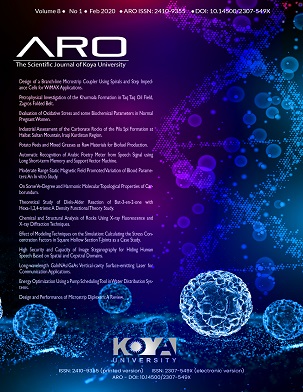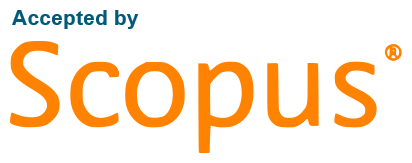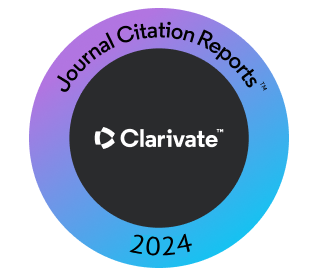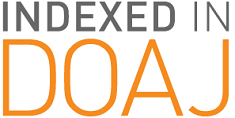High Security and Capacity of Image Steganography for Hiding Human Speech Based on Spatial and Cepstral Domains
DOI:
https://doi.org/10.14500/aro.10670Keywords:
Image steganography, Mel-frequency cepstral coefficients, Speech reconstructionAbstract
A new technique of hiding a speech signal clip inside a digital color image is proposed in this paper to improve steganography security and loading capacity. The suggested technique of image steganography is achieved using both spatial and cepstral domains, where the Mel-frequency cepstral coefficients (MFCCs) are adopted, as very efficient features of the speech signal. The presented technique in this paper contributes to improving the image steganography features through two approaches. First is to support the hiding capacity by the usage of the extracted MFCCs features and pitches extracted from the speech signal and embed them inside the cover color image rather than directly hiding the whole samples of the digitized speech signal. Second is to improve the data security by hiding the secret data (MFCCs features) anywhere in the host image rather than directly using the least significant bits substitution of the cover image. At the recovering side, the proposed approach recovers these hidden features and using them to reconstruct the speech waveform again by inverting the steps of MFCCs extraction to recover an approximated vocal tract response and combine it with recovered pitch based excitation signal. The results show a peak signal to noise ratio of 52.4 dB of the stego-image, which reflect a very good quality and a reduction ratio of embedded data to about (6%–25%). In addition, the results show a speech reconstruction degree of about 94.24% correlation with the original speech signal.
Downloads
References
Abdulraman, L.S., Hma-Salah, S.R., Maghidid, H.S. and Sabir, A.T., 2019. Arobust way of steganography by using blocks of an image in spatial domain.Innovaciencia, 7(1), pp.1-7.
Al-Qershi, O.M. and Khoo, B.E., 2011. High capacity data hiding schemes formedical images based on difference expansion. Journal of Systems and Software,84(1), pp.105-112.
Chakroborty, S., Roy, A. and Saha, G., 2007. Improved closed set textindependent speaker identification by combining mfcc with evidence from flipped filter banks. International Journal of Signal Processing, 4(2), pp.114-122.
Cox, I.J., Miller, M.L., Bloom, J.A., Fridrich, J. and Kalker, T., 2008. DigitalWatermarking and Steganography. 2nd ed. Morgan Kaufmann Publishers, USA.
Davis, S. and Mermelstein, P., 1980. Comparison of Parametric Representationsfor Monosyllable Word Recognition in Continuously Spoken Sentences, 28(4), pp. 357-366.
Huang, X., Acero, A. and Hon, H.W., 2001. Spoken Language Processing. Prentice Hall, Inc., USA.
Jamel, E.M., 2019. Secure image steganography using biorthogonal wavelet transform. Journal of Engineering and Applied Sciences, 14, pp.9396-9404.
Kleijn, W.B. and Paliwal, K.K., 1995. Speech Coding and Synthesis. Elsevier Science Inc., New York, United States.
Navas, K., Thampy, S.A., Sasikumar, M. 2008. EPR hiding in medical images for telemedicine. International Journal of Biomedical Science, 2(1), pp.292-295.
Nipanikar, S.I., Deepthi, V.H. and Kulkarni, N., 2017. A sparse representationbased image steganography using particle swarm optimization and wavelet transform. Alexandria Engineering Journal, 57, 2343-2356.
Oliveira, M.L.L., Cerqueira, J.J.F. and Filho, E.F.S., 2018. Simulation of an Artificial Hearing Module for an Assistive Robot. Intelligent Systems Conference, London, UK.
Saroj, N. and Dewangan, S.K., 2018. An implementation of hiding audio secure data in images using steganography. Journal of Emerging Technologies and Innovative Research, 5(9), 20-25.
Sharma, D., 2015. Steganography of Speech Signal into an Image. Second International Conference on Recent Advances in Engineering and Computational Sciences, USA.
Downloads
Published
How to Cite
Issue
Section
License
Authors who choose to publish their work with Aro agree to the following terms:
-
Authors retain the copyright to their work and grant the journal the right of first publication. The work is simultaneously licensed under a Creative Commons Attribution License [CC BY-NC-SA 4.0]. This license allows others to share the work with an acknowledgement of the work's authorship and initial publication in this journal.
-
Authors have the freedom to enter into separate agreements for the non-exclusive distribution of the journal's published version of the work. This includes options such as posting it to an institutional repository or publishing it in a book, as long as proper acknowledgement is given to its initial publication in this journal.
-
Authors are encouraged to share and post their work online, including in institutional repositories or on their personal websites, both prior to and during the submission process. This practice can lead to productive exchanges and increase the visibility and citation of the published work.
By agreeing to these terms, authors acknowledge the importance of open access and the benefits it brings to the scholarly community.
Accepted 2020-06-23
Published 2020-06-28
















 ARO Journal is a scientific, peer-reviewed, periodical, and diamond OAJ that has no APC or ASC.
ARO Journal is a scientific, peer-reviewed, periodical, and diamond OAJ that has no APC or ASC.